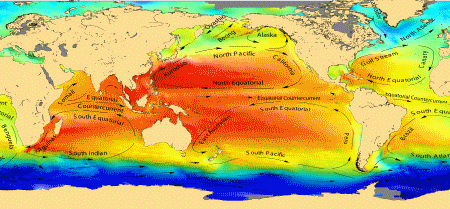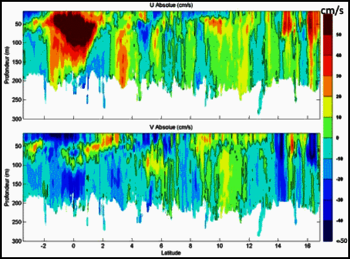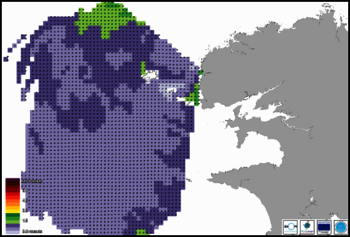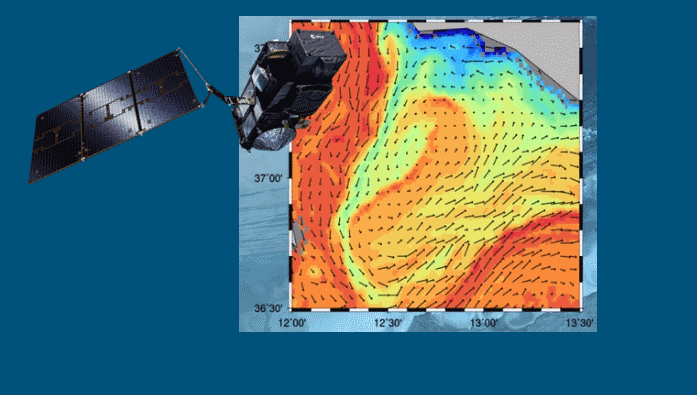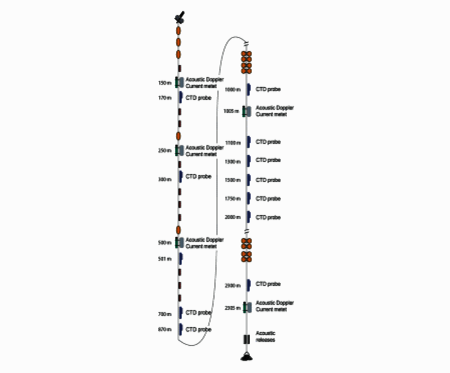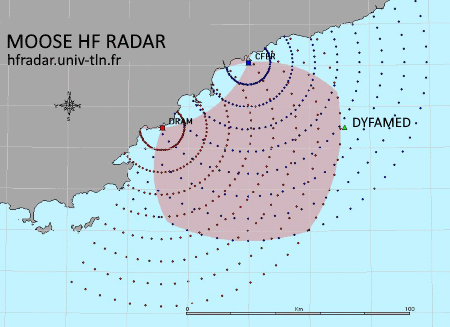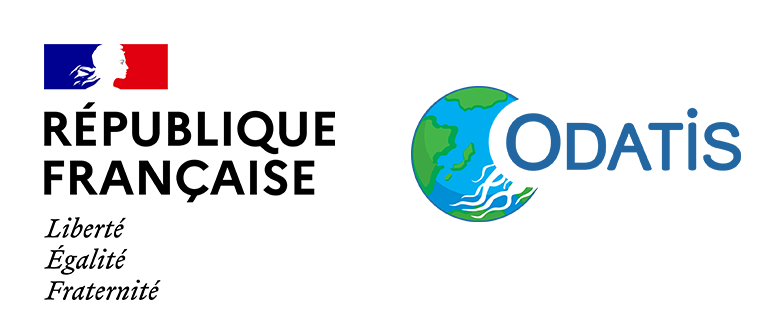Les mesures combinées issues des trois instruments de Sentinel-3 permettent d’améliorer la précision des courants de surface, tant en direction qu’en…
Currents
Marine currents are the drivers of the oceans: on the surface or at depth, they enliven the oceans, rebalance the Earth's heat balance (by transporting heat from the equator to the poles) and redistribute nutrients. In this sense, currents are major actors in the climate.
Currents do not circulate randomly; they obey physical laws that force them to turn in one direction or the other, to dive deep or to rise to the surface. There are many causes of currents: friction forces generated by the action of the wind on the surface of the water, Coriolis force due to the rotation of the Earth, attraction forces generated by the stars, difference in heat or salinity between two bodies of water, etc.
Surface currents, felt to a depth of about 800 m, are mainly generated by the friction forces of winds on the ocean surface. Under the action of the Earth's rotation, the Coriolis force diverts these water masses clockwise in the northern hemisphere (and counter clockwise in the southern hemisphere). Large circular currents are formed; they cross an ocean basin, stretch out in long meanders, accumulate towards the western edge of the oceans (of the northern hemisphere), carry heat and humidity and soften harsh climates. This is the case for the warm currents of the Gulf Stream in the North Atlantic Ocean, the Kuroshio in the North Pacific Ocean, the Brazilian Current, the Needles... Another surface current, which has no hindrances or obstacles, is driven by strong winds and diverted eastward by the same rotational force of the Earth: the circumpolar current around Antarctica.
Underwater currents are no longer generated by winds, but are set in motion by differences in temperature and/or salinity between the different layers of the ocean. Evaporation, precipitation, continental water supply, ice pack formation... are all events that can modify the thermohaline characteristics of seawater. High evaporation, such as in the Mediterranean Sea, tends to concentrate seawater into salts. This water, which has become denser, plunges into the depths. In other latitudes, in the Greenland Sea, in winter, the waters of the Atlantic cool down. This cooling increases the density of the water and causes it to flow to the depths. This thermohaline current marks the starting point of the global ocean circulation. These deep, cold and salty waters travel along the ocean floor (Atlantic, Antarctic, Indian and Pacific) like a conveyor belt (Conveyor belt) before warming up and surfacing in the Pacific and Indian Oceans, then following the opposite path on the surface and working towards completing their long millennial journey.
At other seasonal or spatial scales, other types of currents are important and interact with the atmosphere and climate: monsoon currents, Rossby and Kelvin planetary waves, front, eddies, etc. More information on tidal currents.
